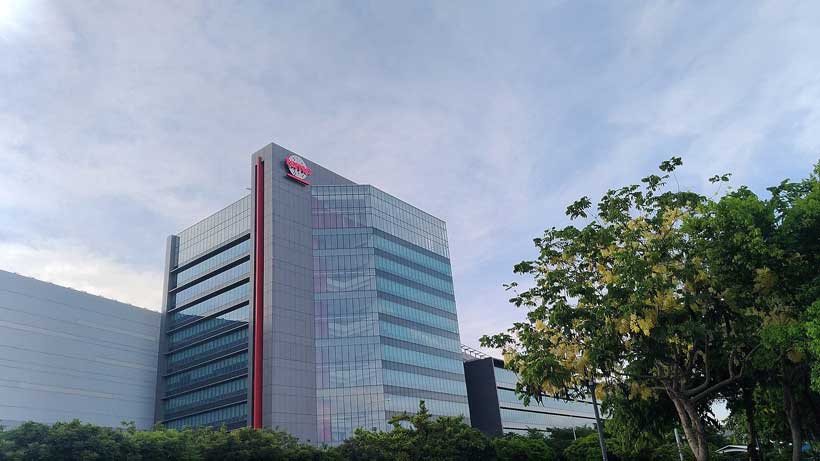Tech scion David Ellison marked his 96th day running Paramount by disclosing an upbeat financial outlook for next year and a plan to reduce an additional 1,600 workers.
Monday’s conference call with analysts was the first time Ellison, Paramount’s chairman and chief executive, directly addressed Wall Street after merging his production company, Skydance Media, with Paramount in August — an $8-billion deal that ushered the Redstone family from the entertainment stage.
One of Ellison’s top priorities will be to reverse decades of under-investment in programming. Paramount plans to increase content spending by $1.5 billion next year, including nearly doubling the number of movies that it releases. The Melrose Avenue studio intends to boost output from eight releases to 15 that are planned for next year.
Investing in technology is another priority, which Ellison referred to as one of its “north stars.” Executives want to build streaming service Paramount+ as the economics crumble for Paramount’s once profitable cable television division, which includes Nickelodeon, MTV and Comedy Central. Paramount also owns CBS stations and the CBS broadcast network.
Paramount announced it will be hiking streaming subscription fees — Paramount+ plans now are offered at $7.99 a month and $12.99 a month — although executives declined to say how much. The goal is to turn its streaming operations profitable this year.
Paramount said the workforce reduction of 1,600 people stemmed from the company’s divestiture late last month of television stations in Chile and Argentina. This comes on top of 1,000 job cuts last month, primarily in the U.S. The company said one of its goals was to operate more efficiently.
More than 800 people — or about 3.5% of the company’s workforce — were laid off in June, prior to the Ellison family takeover.
Ellison and his team have been looking to reduce the company’s workforce by 15%.
On Monday, Paramount executives said they should be able to realize about $3 billion in cost cuts — $1 billion more than initially advertised. The company’s goal is to complete its cost reductions within two years.
The earnings report comes as Paramount has been pursuing Warner Bros. Discovery, a proposed merger that would unite two of Hollywood’s original film studios and bulk up Paramount by adding the HBO Max streaming service, a larger portfolio of cable channels, pioneering cable news service CNN and the historic Warner Bros. studio lot in Burbank.
Paramount executives declined to discuss its dealings for Warner Bros. Discovery, which has rejected three offers, including a $58-billion bid for the entire company. Ellison’s father, billionaire Larry Ellison, has agreed to back Paramount’s bid.
However, his son spoke broadly about its motivations for any acquisition during the conference call.
“First and foremost, we’re focused on what we’re building at Paramount and transforming the company,” David Ellison said. “There’s no must-haves for us. …. It’s always going to be, how do we accelerate and improve our north-star principles?”
Total revenue for Paramount’s third quarter was $6.7 billion, flat compared with the year-earlier period. Paramount reported a net loss of $257 million for the quarter.
Paramount+ and other streaming services grew by 1.4 million subscribers to 79 million, although 1.2 million of those consumers benefit from free trials. Quarterly Revenue for the streaming operations, including Pluto TV, was up 17%.
The cost-cutting comes as Ellison, 42, has accelerated spending in other areas, including agreeing to pay $7.7 billion for the rights to UFC fights and $1.25 billion over five years to Matt Stone and Trey Parker to continue creating their “South Park” cartoon.
His team, including former Netflix programming chief Cindy Holland, also lured Matt and Ross Duffer, the duo behind “Stranger Things,” away from Netflix. Paramount also paid $150 million to buy the Free Press and bring its co-founder, Bari Weiss, to the company as CBS News editor in chief.
The company also signed a 10-year lease on a film and television production facility under construction in New Jersey, a move that will give the entertainment company access to that state’s tax incentive program.
In a blow, however, Taylor Sheridan, the prolific creator behind the “Yellowstone” franchise, will be packing his bags. Sheridan, who is under contract with Paramount through 2028, made a deal to develop movies and future shows for NBCUniversal after executives he worked with at Paramount departed the company when Ellison took over.
For 2026, the company expects to generate total revenue of $30 billion and adjusted operating income before depreciation and amortization of $3.5 billion.
Shares closed at $15.25, up 1%, before the earnings were announced.

